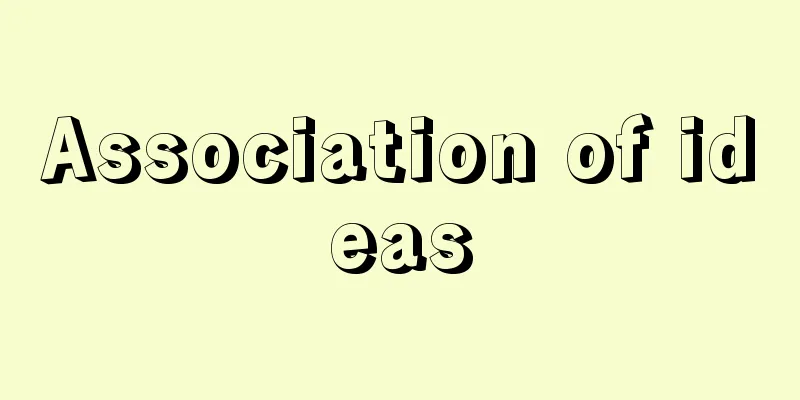Clay figurine

|
In a broad sense, it refers to clay dolls. The haniwa clay figurines from the Kofun period were once called haniwa clay figurines. Usually, it refers to clay dolls from the Jomon period. They appeared relatively early in the Jomon period, and have continued to exist in every period since. They are one of the most representative relics of this period. There are no clay figurines from the Yayoi period that can be definitely called clay figurines. They are made of baked clay, and some of the larger ones are over 40 centimeters tall. Most are about 10 to 30 centimeters in size (height). There are noticeable differences in the overall shape, the expression of each part, and the nature of the patterns depending on the period and region. The early clay figurines omit the face and limbs, but the breasts are clearly visible, so they are undoubtedly female figures. They are very simple in construction, about 4 to 5 centimeters tall. They are shaped like a plate. The excavated items from the Hanawadai shell mound in Ibaraki Prefecture are famous, but there are few discoveries. The early clay figurines are almost the same as the early ones, and lack realism. In the middle stage, they show characteristics typical of Jomon clay figurines, such as faces with eyes, noses, and mouths, and ones with swollen stomachs that represent the state of pregnancy. The shapes are varied. There are also known clay figurines in a sitting position holding an infant, and in a cuckoo-like position carrying an infant on their back. There are also strange expressions such as three-fingered hands, three-mouthed mouths, and upturned eyes. The magical aspects of clay figurines were likely emphasized. In the later period, clay figurines spread and developed nationwide. For example, a large number of clay figurines have been discovered in the Tachiki shell mound (later period) in Ibaraki Prefecture, and their strangeness has sparked interest. Also, the number of excavated items increased in areas west of the Kinki region, where discoveries had been scarce until then. However, all of them lack realism. In the case of the Kanto region, the following transitions are generally known. At the beginning of the Late Period (the period of Horinouchi-style pottery), cylindrical clay figurines without limbs and types featuring heart-shaped faces were created. In the following Kasori B-style pottery period, mountain-shaped clay figurines appeared. Some of these are considered to be relatively realistic. Towards the end of the Late Period (the period of Angyo II-style pottery), "horned owl-shaped clay figurines" with round eyes and a crest-shaped head appeared. In the Late Period, a representative example is the sunshade-shaped clay figurines associated with Kamegaoka-style pottery, which developed mainly in the Tohoku region. As it was once thought to be modeled after a sunshade, the depiction of the eyes is distinctive, and they are elaborately hollow. At the very end of the Jomon period or immediately afterwards, container-shaped clay figurines appeared in parts of the Chubu and Kanto regions. They are hollow and have an opening at the head. There have been reports of cases in which the bones of infants were found inside. It is believed that this type of container-shaped clay figurine evolved into pottery with human faces that became widespread from the southern Tohoku region to the northern Kanto region during the middle of the Yayoi period. Clay figurines are not simply ornaments or toys. They must have been deeply connected to the inner lives of Jomon people. The breasts and the pregnant state are symbols of women, particularly motherhood. For this reason, it is thought that they are associated with prayers for the reproduction of plants and animals, and fertility. Clay figurines are rarely found in their entirety, and most are missing some part. This is interpreted as meaning that they were substitutes for someone who was sick or injured. There are known cases where the missing parts were glued together with asphalt. Furthermore, there have been reports of clay figurines being unearthed from burial pits where corpses were buried. In these cases, they would be considered burial goods, but what meanings could they have had? [Isamu Okamoto] Late Jomon period, 14cm tall, excavated in Aomori Prefecture, owned by the Chicago Art Institute "> Female clay figurine Part. Late Jomon period. Height 16.5cm. Collection of the Metropolitan Museum of Art . Sunshade Clay Figurine Source: Shogakukan Encyclopedia Nipponica About Encyclopedia Nipponica Information | Legend |
|
広義には土製の人形をいう。古墳時代の埴輪(はにわ)も、かつて埴輪土偶とよばれていた。普通は、縄文時代の人形の土製品をさす。縄文時代の比較的早い時期に出現し、以後一貫して各時期に存続する。この時代の代表的遺物の一つである。弥生(やよい)時代には、確実に土偶といえるものはみられない。 粘土を焼いてつくったもので、大きなものは高さ40センチメートルを超える例がある。多くは10~30センチメートルほどの大きさ(身長)である。全体の形、各部分の表現、文様のあり方などは、時期的・地域的な違いが目だつ。早期に属する土偶は、顔面や手足が省略されているが、乳房がはっきりと認められ、女性像とみて間違いない。いたって素朴なつくりで、高さ4~5センチメートル前後のものである。板状を呈する。茨城県花輪台(はなわだい)貝塚の出土品などが有名であるが、発見例は少ない。前期の土偶も、早期のものとほぼ同様であり、写実性を欠く。中期の段階になって、目・鼻・口などを表し顔面をかたどったもの、また腹部が膨らんで妊娠の状態を表したものなど、縄文土偶らしい特徴が表れる。形状は変化に富む。乳児を抱いて座った姿勢のもの、また乳児を背負ったかっこうの土偶なども知られている。また、3本指の手、三つ口を思わせるもの、つり上がった目など異様な表現もみられる。土偶のもつ呪術(じゅじゅつ)的な面が強調されたのであろう。後期には、全国的に普及発達をみせる。たとえば茨城県立木(たちき)貝塚(後期)などからは、おびただしい数の土偶が発見されており、その異常さに関心がもたれる。またそれまで発見例の乏しかった近畿地方以西の地にも、出土品は増える。しかし、いずれも写実性に欠けている。 関東地方の場合には、おおむね次のような変遷が知られている。後期の初め(堀之内(ほりのうち)式土器の時期)には、手足を表現しない筒形土偶、ハート形の顔面を特徴とするタイプのものなどがつくられる。次の加曽利(かそり)B式土器の時期には山形土偶が出現する。これには比較的写実性の認められるものがある。後期の終わりごろ(安行(あんぎょう)Ⅱ式土器の時期)には、丸い目と「とさか状」の頭部を特徴とする「みみずく形土偶」が登場する。晩期になると、東北地方を中心に発達した亀(かめ)ヶ岡(おか)式土器に伴う遮光器形土偶が代表的なものとしてあげられる。かつて遮光器をかたどったと考えられたことがあるように、目の表現が特徴的であり、また精巧、中空のつくりである。縄文時代の最終末ないし直後には、中部・関東地方の一部に容器形土偶が現れる。中空であり、頭部が開口している。内部に幼児骨の納められた例が報告されている。この容器形土偶は、もっぱら弥生時代の中期の段階に、東北地方南部から関東北部にかけて普及した人面付土器へ変化発展していったと考えることができる。 土偶は、単なる飾り物や玩具(がんぐ)などではない。縄文時代人の内面的な生活に深いかかわりをもつものであったろう。乳房や妊娠した状態は、女性とりわけ母性を意識したものである。このことから、動植物の繁殖、豊饒(ほうじょう)を祈願することなどに結び付ける考えがある。また、土偶が完全な形で発見される場合はきわめて少なく、たいていどこかの部分が欠損している。これについては、病気やけがなどの身代りであったとする解釈が聞かれる。その欠けた箇所をアスファルトで接着した例が知られている。さらに、土偶が遺骸(いがい)を埋葬した墓壙(ぼこう)内から出土した例も報告されている。この場合には副葬品ということになろうが、どんな意味が込められていたのであろうか。 [岡本 勇] 縄文時代晩期 高さ14cm 青森県出土シカゴ美術研究所所蔵"> 女性土偶 部分。縄文時代晩期 高さ16.5cmメトロポリタン美術館所蔵"> 遮光器土偶 出典 小学館 日本大百科全書(ニッポニカ)日本大百科全書(ニッポニカ)について 情報 | 凡例 |
<<: Deutzia gracilis - Deutzia gracilis
Recommend
Manacus manacus (English spelling) Manacus manacus
… Although not all species and genera have been s...
Sixth National Diet Congress - Rokuzenkyo
Abbreviation for the 6th National Conference of th...
Symbol - English
The philosophical European equivalent is derived ...
Backside of Nikko
...It is divided into Oku-Nikko upstream of Kegon...
Explosive forming
It is an explosive forming method. In the separat...
Wondjina
… [Jiro Suzuki] [art] The rock art (painted and e...
Medical malpractice - iryoukago (English spelling) malpractice
Also known as medical malpractice, this refers to ...
Brown thrush (akahara)
A passerine bird of the flycatcher family (illustr...
Marine fishery - Kaimengyogyo (English spelling)
Fisheries conducted on the sea surface. A term for...
Fissipeda
…They are broadly divided into the terrestrial Fi...
Coris aygula
...It is good to feed them plant-based food in ad...
Parallelism - deviation from
Parallelism is the degree of deviation of a planar...
Frascomo - Flascomo
A general term for the genus Charophyte, a group ...
Chase Manhattan Bank
…It is the holding company for Chase Manhattan Ba...
Chemical industry
An industry in which chemical reactions are used ...









